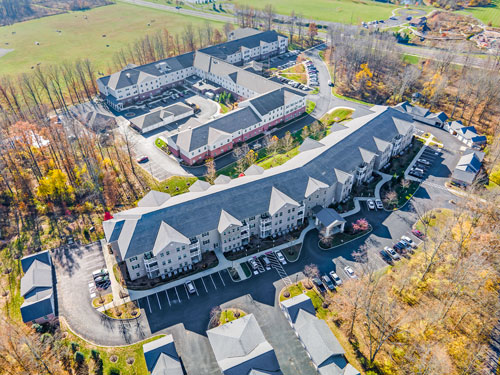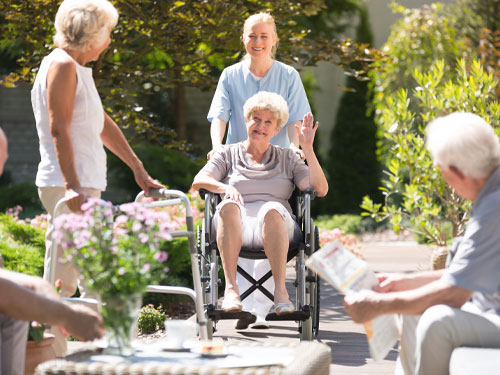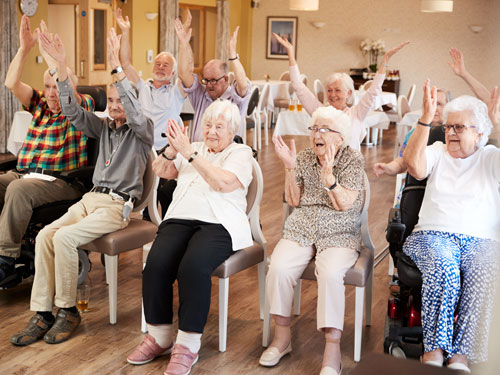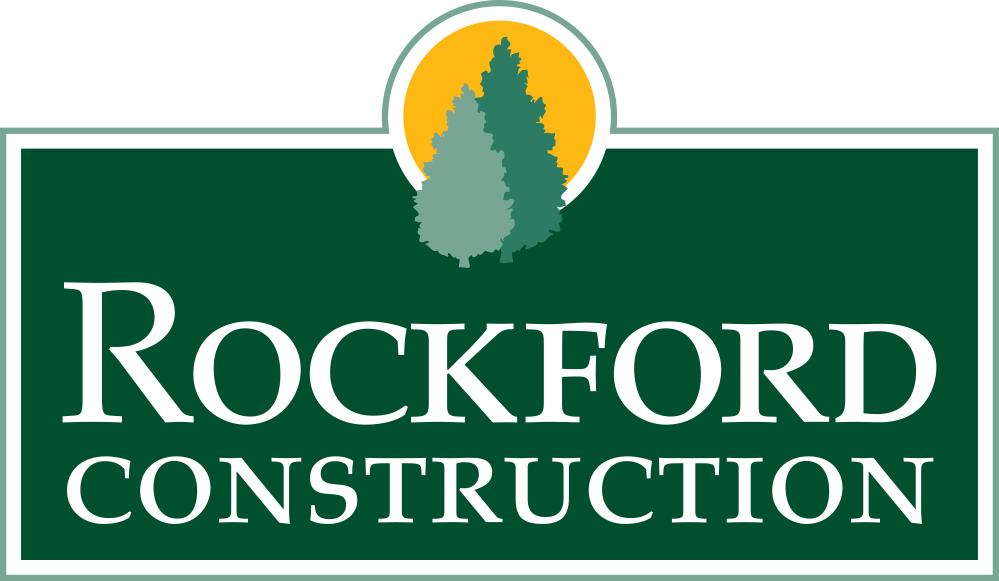
Key Factors When Designing/Constructing a Senior Living Project
As the world’s population ages, the demand for senior housing that caters to the diverse needs and preferences of seniors continues to grow. But what does it take to create a truly exceptional senior living facility?
In this blog post, we’ll explore the key factors when designing/constructing a senior living project that not only meets the unique needs of its residents but also promotes a sense of community, prioritizes safety and accessibility, and embraces sustainability and eco-friendly principles in its design construction.
Key Takeaways
- Designing assisted living facilities and senior housing projects requires understanding different types of options and creating a safe, accessible environment.
- Incorporating fall prevention strategies, mobility enhancements, technology integration, and communal open space can create a sense of community.
- Post-pandemic needs must be met with important considerations for infection control protocols, mental health considerations, space, and hospitality.
Understanding Different Types of Senior Living Options
Understanding the diverse senior living options available is key to designing a project that meets the unique needs of each type of senior housing facility. These options include:
- Independent Living
- Assisted Living
- Memory Care
- Skilled Nursing
- Continuing Care Retirement Communities (CCRCs)
Each option serves a distinct purpose and requires specific design construction considerations to ensure the well-being and satisfaction of its residents.

Independent Living
Independent living communities provide a comfortable and social environment for seniors who can live autonomously in the long term.
These facilities are dedicated to creating a pleasant atmosphere where seniors can enjoy their golden years without the burden of daily chores or home maintenance.
Aging in place is a key consideration in independent living design, allowing seniors to remain within their community as their needs change over time.
When designing this type of senior housing, the architect must incorporate into the design phase such considerations as space utilization, accessibility, building materials, natural light, and other factors that can significantly enhance residents’ emotional and mental well-being.
Furthermore, designing spaces that foster social interaction and provide opportunities for engagement with neighbors, friends, and family can help promote a sense of community and belonging.
Assisted Living
Assisted living facilities, providing a comfortable environment, cater to seniors who require assistance with daily activities and personal care. These senior housing units, also known as assisted living facilities, often feature a range of services and amenities, including:
- Housekeeping
- Dining
- Transportation
- Wellness Programs
These services ensure residents receive the support they need while maintaining a sense of independence.
Memory Care
Memory care facilities cater to seniors with Alzheimer’s or dementia, requiring specialized design elements to support cognitive function.
These facilities often feature secure outdoor spaces, color-coded signage, and dementia-friendly furniture to create a safe and supportive environment that promotes a sense of familiarity and routine for residents.
The architect of such a project must consider not only the physical needs of the residents but also their mental and emotional needs.
Skilled Care
For seniors recovering from health events like surgery or illness, skilled care facilities, also known as nursing homes, offer short-term care.
Nursing homes can be standalone or part of existing facilities that offer multiple levels of care. Among the services often provided are:
- 24-Hour Care
- Physical Therapy
- Occupational Therapy
- Speech-Language Pathology
- Wound Care
These senior care services ensure the residents’ quality of life.
CCRCs
Continuing Care Retirement Communities (CCRCs) offer a multi-level environment that allows seniors to seamlessly transition between different levels of care as their needs evolve over the long term. These facilities often provide a range of amenities, such as:
- On-Site Dining
- Fitness Centers
- Recreational Activities
- Transportation Services
These amenities ensure that residents can maintain a high quality of life and an active community environment as their care requirements change.

Designing for Safety and Accessibility
The design of senior living projects should prioritize safety and accessibility to guarantee residents’ well-being. This includes:
- Incorporating fall prevention measures
- Implementing mobility enhancements
- Integrating technology to cater to the unique needs of seniors and promote a safe and accessible living environment.
Fall Prevention
Implementing fall prevention strategies in senior living facilities can significantly mitigate accident risks. Some key measures include:
- Installing non-slip, even flooring
- Installing handrails in hallways and staircases to help prevent falls
- Ensuring adequate lighting throughout the facility
- Eliminating tripping hazards, such as loose rugs or cluttered walkways
These measures are crucial in creating a safe environment for seniors, as seniors tend to be more susceptible to falls and their associated health complications. Keep in mind that ensuring their safety is of utmost importance.
Mobility Enhancements
Implementing mobility enhancements like ramps, elevators, and stairlifts enhances accessibility for seniors with mobility limitations.
Incorporating these solutions into senior housing projects allows designers and builders to create environments that cater to the needs of all residents, regardless of their physical limitations.
Technology Integration
The integration of technology is pivotal in augmenting safety and accessibility for those living in a senior living community. Smart home features, such as automated lighting, temperature control, and voice-activated appliances, can improve convenience and independence for seniors.
Additionally, emergency call systems provide residents with a quick and easy way to contact staff in case of an emergency, offering a sense of security and protection.
Creating a Sense of Community
Fostering a community within senior living projects plays a significant role in enhancing social interaction and curbing feelings of depression and isolation among residents. Some ways to achieve this include:
- Incorporating communal spaces where residents can gather and interact with one another
- Creating intergenerational living opportunities, such as having daycare centers or schools within the senior living community
- Supporting family involvement by providing spaces for family visits and activities
- Community gardening opportunities that encourage residents to get out of their rooms and interact with nature and one another
- Concerts and readings by local artists and authors keep residents connected to the community, create a sense of belonging, and spur their own creativity
By implementing these strategies, designers, builders, and construction firms can foster a sense of belonging and connection for seniors within their living environment, effectively creating environments that cater to their needs.

Intergenerational Living
Opportunities for intergenerational living, like shared amenities with neighboring communities, facilitate social engagement and build bridges between seniors and the aging population with younger generations.
By providing opportunities for interaction and collaboration, intergenerational living can help break down barriers and stereotypes, creating a more inclusive and supportive community for all residents.
Supporting Family Involvement
Encouraging family participation in senior living facilities plays a significant role in solidifying familial bonds and enhancing residents’ well-being.
Designing visitor-friendly spaces and hosting family-oriented events can encourage family members to participate in the lives of their loved ones, contributing to a sense of community and support within the facility.

Sustainability and Eco-Friendly Design
As they foster a healthier living environment and reflect environmental responsibility, sustainability, and eco-friendly design are gaining importance in senior living projects.
By incorporating LEED certification, energy efficiency, and biophilic design elements, designers and builders can create facilities that are both environmentally conscious and appealing to residents.
LEED Certification
LEED certification for your senior or assisted living facility signals a commitment to sustainable building practices and aids in improving a facility’s environmental footprint.
Achieving LEED certification indicates a dedication to utilizing sustainable building practices, thereby optimizing a facility’s environmental performance and setting it apart from competitors.
Energy Efficiency
Incorporating energy-efficient features into senior living projects can have several benefits, including:
- Reduced operational costs
- Positive environmental impact
- Lower energy bills
- Cost savings
- Minimized emissions of greenhouse gasses and other pollutants
Biophilic Design
The inclusion of natural elements like plants and natural light in biophilic design enhances residents’ well-being and fosters a more appealing atmosphere.
Connecting residents with nature through biophilic design can lead to reduced stress levels, improved mental health, and a more tranquil and comforting living space.
Adapting to Post-Pandemic Needs
To ensure the ongoing safety and well-being of residents, senior living projects must adapt to post-pandemic needs.
By implementing infection control measures, creating flexible spaces, and addressing mental health considerations, designers and builders can create facilities that are better equipped to handle future challenges and meet the evolving needs of their residents.

Infection Control Measures
Implementing infection control measures like improved ventilation and easy-to-clean surfaces aids in protecting residents from potential future outbreaks.
By enhancing air circulation and integrating materials that inhibit the growth and transmission of germs and bacteria, designers and builders can develop secure environments for elderly individuals who might be at a higher risk of contracting illnesses.
Flexible Spaces
Spaces that offer flexibility, such as convertible rooms and outdoor areas, can adjust to changing needs and foster social distancing when required. By designing spaces that can be readily adapted to different uses, senior living projects can better respond to evolving requirements and ensure the safety and comfort of their residents in a senior living space.

Take the Next Step Toward an Exceptional Senior Living Project
Designing and constructing a senior living project is a complex process that requires careful consideration of various factors, including the unique needs of different types of senior living options, safety, accessibility, fostering a sense of community, sustainability, and adapting to post-pandemic needs.
By addressing these elements, designers and builders can create exceptional senior living facilities that promote the well-being, comfort, and satisfaction of their residents, ultimately contributing to a better quality of life for seniors.
If you’re looking to learn more about the construction and design of senior living projects, speak with the experts at Rockford Construction.
Our team has decades of experience designing, building, and renovating senior living facilities, including independent living, assisted living, memory care, and skilled nursing. Contact us today to schedule a consultation.

